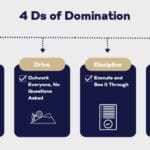I started working in my first managerial position in the year 2000, right after graduate school. And during those first weeks on the job, I spent a considerable amount of time developing relationships with my staff and colleagues and learning as much as possible about the building and areas I would oversee. One day, I remember going to the central office area of my building complex to get additional information, and I had a memorable conversation with the front desk worker whom I was meeting for the very first time. After introducing myself and exchanging pleasantries, I proceeded to ask if it would be possible for me to get keys and access to one of the areas in my building. The front desk worker said: “You are the manager. You can do whatever you want here!” I chuckled, and then I responded by saying: “Just because I have the authority and power to do something, doesn’t mean that I should do it.” Upon reflection, it is interesting that the front desk worker believed that I had unlimited power. However, in my mind, I viewed myself as a new person trying to learn and to ensure that I was following procedures and protocols. Whenever I transition into a new role, I often refer to this experience. It serves as a reminder to me about the importance of using power and influence in a responsible and ethical manner.
Power and influence are defined in the following statement:
“Power is the potential ability to influence the behavior of others. Influence is the effect that a person’s actions have on the attitudes, values, beliefs, or behavior of others. Whereas power is the capacity to cause a change in a person, influence may be thought of as the degree of actual change” (Daft & Marcic, 2020, p. 430).
Managerial leaders should understand and distinguish between six distinct types of power used in organizations as defined by Peter Northouse (2019),:
- Legitimate Power: “Associated with having status or formal job authority. A judge who administers sentences in the courtroom exhibits legitimate power.”
- Reward Power: “Derived from having the capacity to provide rewards to others. A supervisor who compliments employees who work hard is using reward power.”
- Coercive Power: “Derived from having the capacity to penalize or punish others. A coach who sits players on the bench for being late to practice is using coercive power.”
- Information Power: “Derived from possessing knowledge that others want or need. A boss who has information regarding new criteria to decide employee promotion eligibility has information power.”
- Referent Power: “Based on followers’ identification and liking for the leader. A teacher who is adored by students has referent power.”
- Expert Power: “Based on followers’ perceptions of the leader’s competence. A tour guide who is knowledgeable about a foreign country has expert power.”
Four of these power types (legitimate, reward, coercive, information) come from the manager’s formal position or rank in the organization, while the other two power types (referent, expert) are given to the manager by their followers and at times by their colleagues. And it is possible that two or more managerial leaders could achieve the same results or organizational outcomes even though they used different power types.
It was necessary to share this background knowledge and operational definitions first because it leads to what I want to discuss next. For quite some time, I have been thinking more about ways to help new managerial leaders think about power and influence. While the declarative knowledge (the “know what”) about power and influence is readily available, I have wondered if new managerial leaders possess the procedural knowledge (the “know how”), situational knowledge (the “know when”), and reflective knowledge (the “know why”) as well. To assist me in this matter, I reached out to my colleague Dr. Tim Peterson, Professor of Management at the College of Business at North Dakota State University. During our conversation, we determined that a set of guidelines and reflective questions to help new managerial leaders to think deeply about their power and influence would be beneficial. The goal would be to help them 1) understand the types of power they have and 2) reflect on how those power types have been and/or should be used. Below are some reflection questions to help begin this introspective process:
- Legitimate Power: Am I using my legitimate power solely for my benefit or also for the benefit of individuals I have power over?
- Reward Power: Are rewards provided equally to all individuals I have power over? Or are rewards given to avoid trouble and/or to appease difficult supervisees?
- Coercive Power: Am I being fair when using coercive power? For example, is it fair to reprimand and punish one employee after only a single negative behavior/ performance incident while another employee is reprimanded and punished after multiple incidents?
- Information Power: Is the information shared equally with all people, or is information selectively shared with specific individuals?
- Referent Power: What characteristics do people ascribe to me? Will others do things simply because of my personal characteristics?
- Expert Power: Do my employees and colleagues view me as an expert in my field? Do individuals routinely seek me out for advice and recommendations on a particular topic?
Reflecting on these initial questions is an especially important first step for new managerial leaders who want to understand their power and influence in an organization. Additional steps might include determining if one’s power and influence are concentrated in one power type or across various power types, getting feedback from a trusted mentor, or assessing the degree to which one’s power and influence enable them to access and control the four types of organizational resources (see my article in the August 2020 issue of Fargo INC! that discusses this in more detail).








